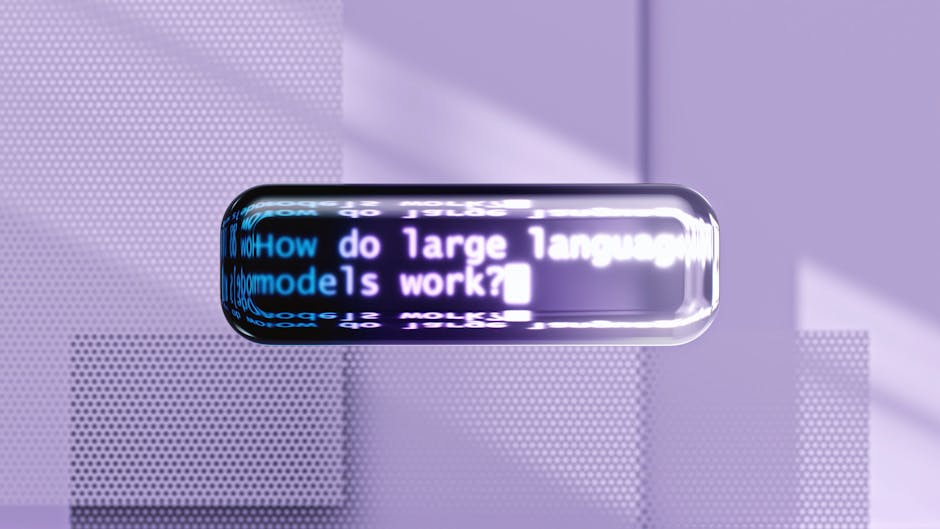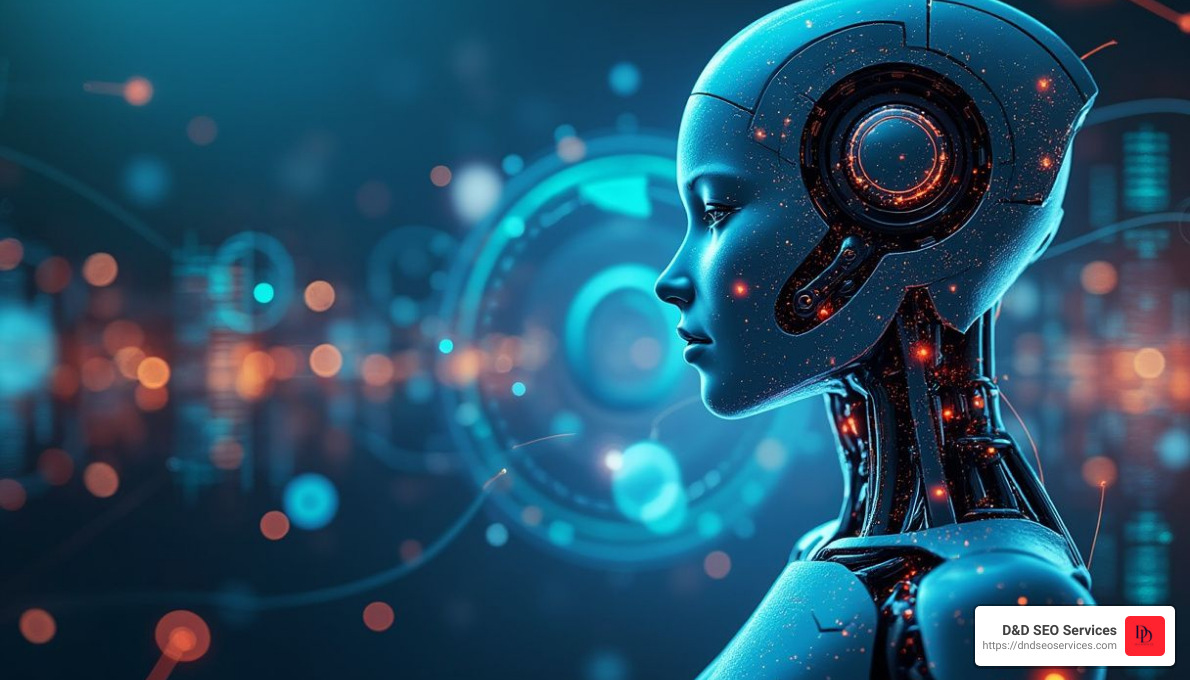Changing Digital Landscapes: The Role of AI in Modern Web Design
AI in web design is revolutionizing the way websites are created, optimized, and personalized. Here’s what you need to know:
Key Changes Brought by AI in Web Design:
1. Increased Efficiency: Automates repetitive tasks, reducing development time.
2. Improved User Experience: Personalizes interactions based on user data.
3. Smart Automation: Generates code, content, and design suggestions swiftly.
4. Real-Time Monitoring: Provides instant feedback for ongoing optimization.
AI, or Artificial Intelligence, has become a game-changer in web design. By using its power, developers can create intelligent, adaptive, and engaging websites. Whether it’s automated testing to find bugs quickly or personalization features that improve user engagement, AI is all about making web design smarter and faster.
My name is Danielle Birriel, and with over a decade of experience in SEO and digital marketing, I’ve seen how AI in web design can transform your online presence. At D&D SEO Services, we use AI to craft user-centric and visually compelling websites that stand out.
The Basics of AI in Web Design
Automation
AI is changing web design by automating many of the repetitive tasks that used to consume developers’ time. Instead of manually writing line after line of code, AI tools can generate code based on high-level descriptions. This not only speeds up the process but also reduces the chances of human error.
For example, platforms like Wix ADI use automation to create websites from scratch, allowing developers to focus on more complex tasks. This level of automation makes it easier to make quick changes during the development process, saving both time and money.
Coding
AI is also making coding more efficient and accurate. Tools like Durable.co can convert Figma designs into clean, semantic HTML and CSS code. This eliminates the need for manual coding and ensures that the code is optimized for performance.
AI can also assist in debugging by identifying broken links or errors in the code, making it easier to maintain a high-quality website. This is particularly useful for large websites where manual code reviews can be time-consuming.
Content Creation
Creating engaging content custom to different customer segments is another area where AI shines. Natural Language Processing (NLP) models can generate relevant text content like product descriptions, blog articles, and customer testimonials.
Platforms like Wix offer AI-powered content writing tools that can produce high-quality content based on a few key inputs. This not only saves time but also ensures that the content is optimized for SEO, improving search engine rankings.
SEO Optimization
Speaking of SEO, AI is a game-changer in this field as well. AI algorithms can analyze user behavior and generate automated recommendations for website structure and design. This helps in optimizing content for search engine rankings, making it easier for potential customers to find your website.
AI can also use techniques like image compression, code minification, and caching to improve the speed at which webpages load. Faster loading times improve user experience and can lead to higher conversion rates.
User Behavior Analysis
Understanding user behavior is crucial for creating a user-friendly website. AI tools can analyze vast amounts of data to detect trends in user behavior. This information can be used to make data-driven decisions about website structure and content.
For instance, AI can provide real-time feedback on how users interact with your website, allowing you to make immediate adjustments. This can lead to a more engaging and personalized user experience, which is essential for retaining visitors and boosting conversions.
By leveraging these AI capabilities, web designers can create more efficient, engaging, and user-friendly websites. The automation of mundane tasks allows developers to focus on more important aspects of web design, ultimately leading to a better user experience.
How AI is Revolutionizing Web Design
AI-Powered Tools for Web Design
AI is changing web design by automating tasks, personalizing user experiences, and providing real-time monitoring. Let’s dive into some of the most impactful AI-powered tools and technologies.
Artificial Design Intelligence (ADI)
Artificial Design Intelligence (ADI) is a game-changer in web design. ADI can create a website from scratch based on user inputs. For example, Wix ADI analyzes your business needs and automatically generates a unique, customized website. It selects from billions of design combinations to ensure your site is both functional and visually appealing.
Automated Tasks
AI takes over mundane tasks like coding, formatting, and site optimization. This frees up developers to focus on more creative aspects. Platforms like Unicorn Platform make it easy to edit block content, write custom HTML code, and add CTAs—all through intelligent algorithms. This not only saves time but also ensures a consistent look across all platforms.
Personalized Experiences
AI can tailor content to individual users, enhancing their experience. For instance, AI chatbots can interact with users in real-time, answering questions and providing personalized recommendations. According to a Gartner report, 85% of customer interactions will be handled by AI chatbots by 2020. This kind of personalization can significantly improve user engagement and satisfaction.
Real-Time Monitoring
AI allows for real-time monitoring of website performance. Tools can detect broken links, optimize loading times, and provide instant feedback. This ensures your website runs smoothly and efficiently. For example, Hostinger’s AI-powered website builder uses heatmapping technology to predict user interactions and offers suggestions to improve visual hierarchy and calls-to-action.
NLP-Based Content Creation
Natural Language Processing (NLP) is revolutionizing content creation. Platforms like Wix offer AI Writer tools that generate high-quality content based on a few key inputs. This is particularly useful for creating product descriptions, blog posts, and customer testimonials. By leveraging machine learning, these tools can understand the context and semantics of language to produce relevant content.
By integrating these AI-powered tools, web designers can create more engaging, efficient, and user-friendly websites. The automation of routine tasks enables designers to focus on innovation, ultimately leading to a superior user experience.
Benefits of AI in Web Development
Enhancing User Experience (UX) with AI
Speed and Efficiency: AI in web design automates repetitive tasks, making the development process much faster. For instance, AI-driven automated tests can quickly simulate user experiences, detect bugs, and provide detailed reports. This saves developers time and effort, allowing them to focus on more complex aspects of web design.
Personalization: AI-powered tools like chatbots and recommendation engines offer personalized user experiences. For example, AI chatbots can handle customer queries 24/7, providing instant support and freeing up human staff for more complicated issues. According to a Gartner report, 85% of customer interactions were expected to be handled by AI by 2020, highlighting the significant role of AI in enhancing user engagement.
Real-time Feedback: AI tools can provide real-time insights into user behavior, such as which areas of a site are most visited and when users are most active. This data helps developers make informed design decisions that improve user experience and maximize ROI.
Improving User Interface (UI) with AI
Adaptive Design: AI can create adaptive designs that adjust to user preferences and behaviors. Tools like Wix’s Artificial Design Intelligence (ADI) use deep learning to understand design principles and generate unique, user-specific interfaces. This results in a more engaging and intuitive user interface.
Deep Learning: AI algorithms can analyze vast amounts of data to offer intelligent design suggestions. For instance, Adobe Sensei uses machine learning to improve design elements, making them more functional and visually appealing. This helps in creating interfaces that are not only attractive but also user-friendly.
Intelligent Design Suggestions: AI can recommend changes to UI elements like buttons, fonts, and color palettes based on user feedback. This continuous improvement leads to a more intuitive and effective interface over time.
By leveraging AI, web developers can significantly improve both UX and UI, resulting in websites that are not only more efficient and cost-effective but also more engaging and personalized for users.
Common Use Cases for AI in Web Design
AI for Automated Testing
Automated testing is a game-changer in web design. AI-driven tests can simulate user experiences, detect bugs, and provide detailed reports. For example, tools like Applitools can test the visual code of a website, track web page behavior, and improve the page’s aesthetics. This helps in bug detection and performance optimization without manual effort.
User simulation is another powerful feature. AI can mimic user interactions to identify potential issues before a site goes live. This ensures that your website performs optimally, providing a seamless experience for real users.
AI for Content Generation
Content generation is another area where AI shines. AI tools can create text, images, and even videos based on prompts. For instance, platforms like Midjourney and Dalle-3 can generate images custom to your needs. However, be cautious—AI-generated images might need human review for accuracy.
Text to video tools like Pikalabs and Runway Gen-2 can turn static images or text prompts into engaging videos. This is particularly useful for creating dynamic content that captures user attention.
Contact Forms
Creating contact forms can be time-consuming. AI simplifies this by generating forms based on user prompts. This ensures that visitors can easily submit their information, improving user interaction and data collection.
Data Analysis
AI excels at data analysis. By examining user behaviors, AI can provide valuable insights into which areas of your site receive the most attention and when users are most active. This helps in making informed design decisions, ultimately maximizing your ROI.
Performance optimization is another benefit. AI can analyze loading times, user interactions, and other metrics to suggest improvements. This ensures your website runs smoothly and efficiently.
In summary, AI is changing web design by automating tasks, generating content, and offering data-driven insights. These advancements not only save time and money but also create more engaging and personalized user experiences.
Frequently Asked Questions about AI in Web Design
How is AI used in web design?
AI is a game-changer in web design. It helps in various ways:
- Text Generation: Tools like ChatGPT can generate engaging copy for your website. You can ask it to create product descriptions, blog posts, or even full web pages.
- Image Creation: AI tools like Midjourney and DALL-E can create custom images based on your inputs. This saves time and ensures your visuals are unique.
- Video Creation: AI can help generate videos from text or images, making it easier to add dynamic content to your site.
- Personalized Content: AI analyzes user behavior to offer personalized recommendations. This can improve user engagement and satisfaction.
Is AI replacing web designers?
No, AI is not replacing web designers. Instead, it complements their work:
- Human-AI Collaboration: AI handles repetitive tasks, freeing up designers to focus on creativity and strategy.
- Improved Creativity: AI can suggest design elements and layouts, helping designers explore new ideas and avoid creative blocks.
- Efficiency: AI speeds up the design process. For example, Wix ADI can create a basic website layout in minutes, which designers can then customize.
Can I use AI in my website?
Yes, you can use AI to improve your website in many ways:
- SEO: AI tools can optimize your content for search engines, improving your site’s visibility.
- Loading Time: AI can analyze and optimize your site’s performance, ensuring faster loading times.
- Accessibility: AI can help make your website more accessible by suggesting improvements for better user experience.
- Personalized Content: AI can tailor content to individual users, increasing engagement and conversion rates.
By integrating AI into your web design process, you can create a more efficient, engaging, and user-friendly website.
Conclusion
AI’s Potential
Artificial intelligence (AI) is revolutionizing web design, making it faster and more efficient. With AI, we can automate repetitive tasks, personalize user experiences, and gain insights from user behavior. This technology allows us to create dynamic, engaging websites that adapt to users’ needs in real-time.
Future Trends
Looking ahead, we expect AI to play an even bigger role in web design. Technologies like augmented reality (AR) and voice search are set to become more integrated, offering users immersive and intuitive experiences. Hyperlocal targeting will also become more prevalent, helping businesses reach customers exactly when they need them.
D&D SEO Services
At D&D SEO Services, we specialize in leveraging AI to improve your website’s performance and user experience. Our AI-powered SEO services are designed to help your business stand out in a competitive digital landscape. We combine cutting-edge AI tools with our team’s expertise to deliver personalized strategies custom to your unique needs.
Competitive Edge
Using AI in web design gives businesses a significant competitive edge. By automating routine tasks and providing real-time insights, AI frees up time for creative problem-solving and innovation. This not only improves efficiency but also improves the overall user experience, leading to higher engagement and conversion rates.
Incorporating AI into your web design strategy is not just about keeping up with trends; it’s about staying ahead of the competition. By embracing this technology, you can create a more engaging, efficient, and user-friendly website that meets the needs of today’s digital-savvy consumers.








